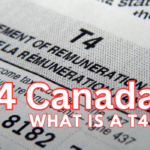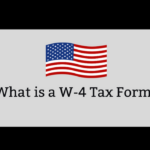In this article, you will know about the Minimum Wage Increase: What is the History and Future of Canada Minimum Wage Increase? The Government of Canada have set minimum wage rates for its employees according to which their employer has to pay them. It applies to all the regulated cooperation, it is the provinces set rates that every industrialist has to follow and provide their employee with a proper rate for their work. To get more crucial information related to the Minimum Wage Increase, what it is, and more, continue browsing this article.
Minimum Wage Increase
On April 1 of every year, the Canadian Government revised the Minimum wage according to the CPI inflation. The minimum wage rate in Canada is double the compression of the previous year. Through this, the job seeker gets to know about the value of their skill.
A minimum wage is the minimum sum to offer to any employee. The wage rate varies according to the different territories and provinces. The Federal Government owns the minimum wages for their employees. It applies to the private sector workers.
|
Important Links |
What is the Minimum Wage in Canada?
The minimum wage rate is a minimum payout that an employer has to legally provide to its employees. In 2023, the minimum Federal wage rate is 16.65 p/hr. This rate is not fixed it can be provided more but not less than the minimum sum.

The minimum wage is the lowest sum of money an employer has to pay to their employee. Its qualification is based is based on whether the worker is working full-time or part-time. Some of the provinces set their wage rates based on the consumer price index, which tracks inflation and determines how much employer needs to pay their employees.
Minimum Wage Rates According to the Province
The higher wage rates depend on the employers, as the federal government sets their wage rates after that, it also depends on the provincial government. The wages for the year 2023 are:
| Province | Wages (P/Hr) |
| Alberta Minimum Wage | 15 CAD |
| Ontario Minimum Wage | 16.55 CAD |
| British Columbia Minimum Wage | 16.75 CAD |
| Manitoba Minimum Wage | 15.3 CAD |
| Nova Scotia Minimum Wage | 15 CAD |
| Yukon | 16.77 CAD |
| Nunavut | 16 CAD |
| Saskatchewan Minimum Wage | 14 CAD |
| Quebec Minimum Wage | Check Here |
For the year 2023, the wage rates of the province per hour are mentioned above in the table. In this, the Yukon government provides their employees with the highest rate of wages of 16.77 CAD per hour. Along with that, BC has 16.75 CAD p/hrs.
|
Important Links |
Alberta, Saskatchewan, and Nova Scotia have lower wage rates for their employees because the prices and inflation there are lower as compared to the other provinces.
What is the History and Future of Canada’s Minimum Wage Increase?
The future of the minimum wage rate depends on the inflation. In 2022, the inflation rose to 6.08%, which makes the worker’s life more critical. By increasing the minimum wage rate, more than 26K workers in Canada will get help to live their lives more affordable.
Earlier in the 20th century, minimum wage rates were introduced to improve the worker’s living standard and reduce poverty. It is paid in the hourly wages, which is unchangeable. In 1976, it was set for 11 CAD in Canada, followed by the next year, it peaked at 24 CAD per hour.
Because of inflation, the employee face many problems related to their livelihood. The federal wage rate helps the employee continue living more comfortably and provide good facilities for them and their families.
The wages will continue to increase according to the inflation, and as much it will grow, the government will also take action accruing to this. The individual has to make sure and know about their territory wage rate. If their employer provides them less than the minimum sum, then they can take legal action towards their employer.
The wage rates are the same for everyone, and it applies to certain federal industries, which include banks, transportation, postal services and other federal corporations. The overtime rates are paid on behalf of employee wages.
The average salary of an individual employee is 4,108 USD per month, which equals 49,300 USD in a year. On average, Men can earn 5% more than women in their career field.





